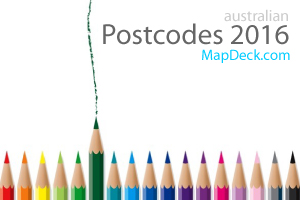There was a time that Google and its Map API was the only talk in town. Their revolutionary approach to serving spatial data online has broken the monopoly of specialist GIS companies on all things spatial. Many followed in Google footsteps with similar, simplified online products but were mostly overshadowed by the first mover in the field. For a moment it seemed that nothing else matters and that Google will dominate the market indefinitely. However, introduction of fees for high usage of Google Map API led to a big backlash against the company as many developers realised the vulnerability of their business to caprices of a key partner. Suddenly alternatives started to look very attractive - despite the limited functionality offered. And the competition in the online map market started to intensify again...
Acquisition of Waze by Facebook for a reported $1B is the flavour of the month (although not done deal yet). It demonstrates that the appetite of large companies for ready-made online mapping technologies is growing. Apple has its fingers firmly in the pie beefing up reliability of its offering (after a very unfortunate start) and optimising performance with vector graphics far beyond Google Map capabilities. Microsoft is surprisingly quiet…
The key enabler for “lower end” alternatives to Google Map was, and still is, Open Street Map project which provided developers with roads dataset all over the world (traditionally, the cost of using that data was so restrictive that only those with very deep pockets could attempt to do it on a world scale). CloudMade and MapQuest offered free access to their versions of OSM data and started building a variety of free services, enabling replicating key functionality of Google Map, such as geocoding or navigation. ESRI has also thrown in their support releasing free map layers and their GeoCommons platform (although I am not sure if the current licensing restrictions still allow unconstrained use of that data).
There are many viable alternatives to Google Map and, as a developer or end user, you are no longer forced to accept strict conditions imposed by Google. By switching to any of those alternatives you will have much more flexibility in developing services and applications and will take back control of your business. And you don’t have to compromise on functionality, at least not too much… My favourite amongst free alternatives is Leafletjs (originally developed by CloudMade). It is easily extendible with free services from MapQuest. If you are after a 3D kind, Cesium from Analytical Graphics, Inc looks very promising - supports also 2D mapping but unfortunately, it works only in WebGL enabled browsers (by the way, NICTA built on this platform a very impressive range of spatial applications which demonstrate its full potential).
Thursday, May 30, 2013
Subscribe to:
Post Comments (Atom)




1 comment:
and it only gets more competitive from here! looking forward to seeing all of the wonderful things we will be able to do next year for Survey Earth in a Day 3D http://surveyearth.com
Post a Comment